As we start 2019 and my first year as Glenmorangie Research Fellow comes to a close, I am thrilled to finally reveal something I have been working on from day one, which is now coming to fruition. A hint: it continues our work on Early Silver, and it involves me, an archaeologist, working within the world of contemporary craft and design.
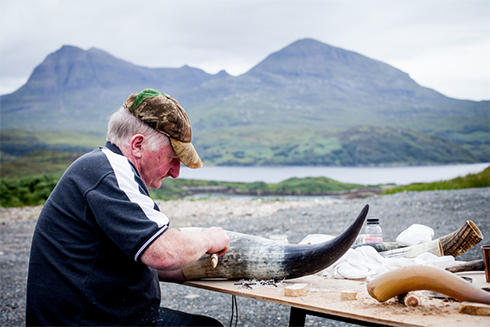
But first, some background. The Glenmorangie Research Project has to date incorporated contemporary craftsmanship along with its research into early medieval Scotland. In the past, we have worked with experts to recreate some of the objects we have lost to time: a wooden throne of a kind only glimpsed on Pictish stones; bronze hand-bells that would have been used to call monks to prayer, but which only survive as rusted shadows of what they once were; a drinking horn finished in silver to match those hinted at in our collection. The finished items are beautiful in their own right, but our curators especially benefit from the expertise of the craftspeople who share their insights into working these materials and the dialogue created around the available evidence.
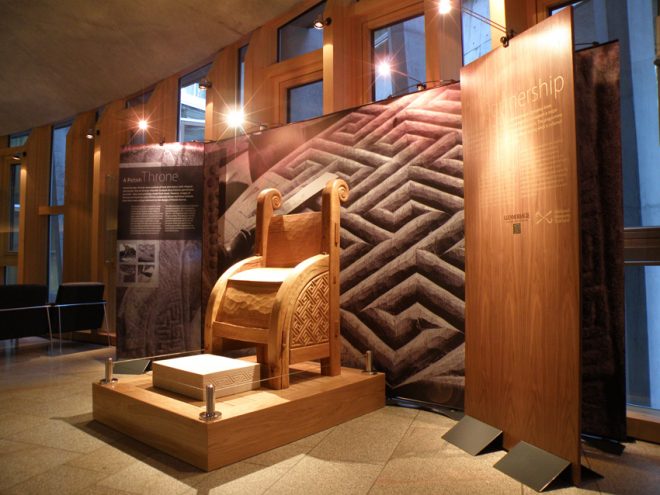
For this next phase of the project, we are venturing into new territory. Our research on Scotland’s Early Silver took the story up to the Viking Age, when new sources of silver spurred an economic revival, as well as a revolution in design. In 2019, we commence The Glenmorangie Commission, in which I will collaborate with a master metalsmith who will create a work of contemporary craft inspired by our Viking-age silver, to be displayed in the Making and Creating gallery in the National Museum of Scotland. It will show how early medieval artefacts in our collections still raise questions and inspire creativity, allowing me to explore the material from a new perspective like our previous craft commissions.
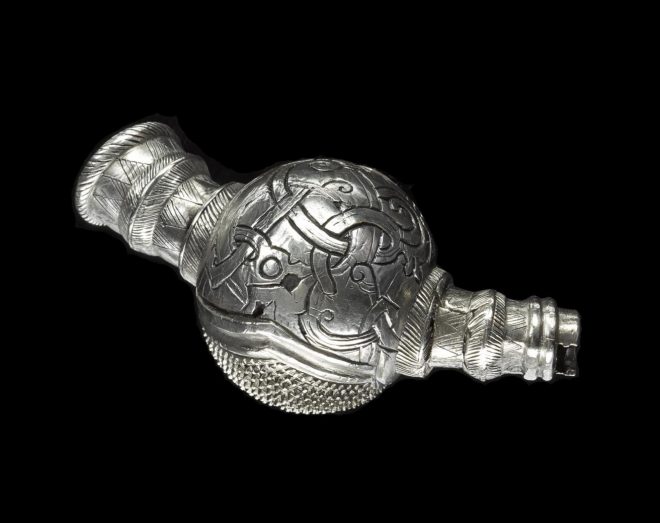
Carrying this out has required a lot of help from beyond my department. I teamed up with Sarah Rothwell, Curator of Modern and Contemporary Design, to create a shortlist of contemporary silversmiths in the UK who are pushing the boundaries of their chosen material. We were delighted to receive enthusiastic statements of interest from ten designers, but then came the difficult task of deciding on one to award the Commission to. Sarah and I were joined by a diverse panel of voices, gathering in expertise in silver, visual arts and history, including: Corinne Julius, design critic, journalist, and curator of the Silver Speaks: Idea to Object exhibition at the Victoria & Albert Museum in 2016-17; David Eustace, photographer, curator and Chancellor of Edinburgh Napier University; our Keeper of Scottish History and Archaeology Stuart Allan; and Hamish Torrie, Director of Corporate Social Responsibility at The Glenmorangie Company.
We met in October and after a day reviewing the fascinating work of some of the UK’s leading silversmiths, we unanimously decided on the winner. But then came another challenge: keeping it quiet until the announcement in December at Corinne Julius’s Glenmorangie Annual Lecture.
Glenmorangie Annual Lecture 2018
These lectures have been a fixture of the Edinburgh cultural calendar since the inaugural lecture in 2012, and their aim has always been at the core of the Glenmorangie Research Project: to illuminate the craft behind the objects in our collections. After working with Corinne Julius on the Glenmorangie Commission, it was clear her knowledge of the field of silversmithing in the UK is unparalleled, and she generously accepted our invitation to be our guest lecturer in 2018.
Corinne showed us the changing value of silver in the long term, focusing mainly on the post-war era to today. She began with the recycling of Roman silver as seen in the Traprain Law Hoard as emblematic of its biggest strength and weakness – easily worked, but also eminently reusable. She made the striking observation that even today, the rarity of silver means there are likely traces of ancient artefacts in the silver we use and wear. “In using silver we are incorporating the past and the present and the future.”
Throughout history, silver has been used as a way to display, as well as store and transfer, wealth and power. But like many things which changed in the 1960s, silver was increasingly seen as old fashioned, even elitist, and was rarely used by young artists of the time. This began to change in the 1970s with a radical group of young artists at the Royal College of Arts in London, including Michael Rowe, who foregrounded design and technique as the main focus of silversmithing – in Corinne’s words, making silver into a “medium of expression, of experimentation and investigation.”
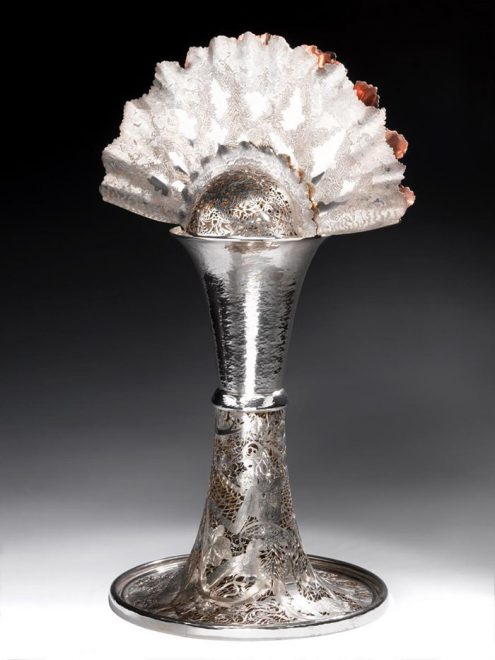
One of Rowe’s most influential students is Simone ten Hompel, a German-born artist who came to focus on the everyday through the medium of silver. As a severe dyslexic, she found from an early age that she could express herself through art more easily than the written word. She thinks through making, and describes her process as a negotiation with the material. She has famously said that metal is her language, and that different metals express themselves differently. One of her contributions was to popularise brushed, matte surfaces, a subversion of one of silver’s most prominent qualities – its ability to take a mirrored polish.
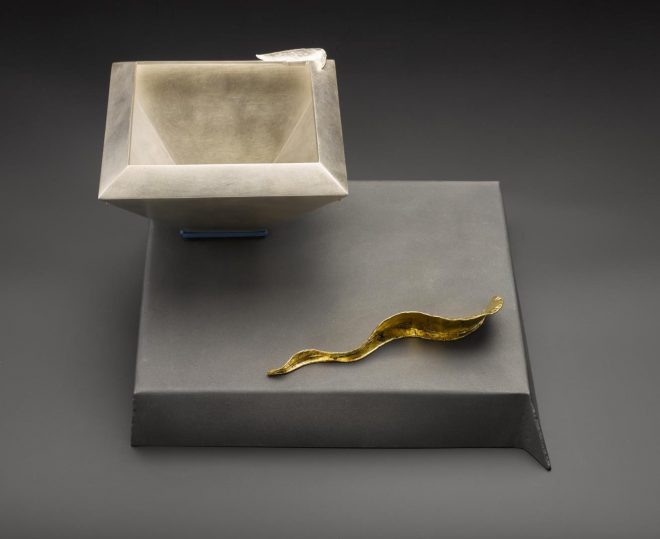
I learned from Corinne’s lecture that many of the innovators in UK silversmithing today were taught by ten Hompel, and by the end even my untrained eye was starting to pick up the design connections between the work of different artists – as a specialist craft, apprenticeship and dialogue are crucial to the life of the discipline. We were extremely lucky to have an expert guide to this world in Corinne.
At the end of her fantastic lecture, having taken us through the past and into the present, we could now direct our attention to the future. Sarah Rothwell introduced the audience to the Glenmorangie Commission, and revealed that the winner of the competition was right there with us. It was clear why the decision of the judging panel had been unanimous – the shortlisted artist was none other than Simone ten Hompel.

The new Glenmorangie Commission
Simone graciously accepted the challenge of this new Commission. Sarah and I had the pleasure of spending the day with Corinne and Simone, and we had our first conversations in the Early People gallery. Simone’s enthusiasm and her knowledge of the material was immediately apparent – I found myself scrambling for paper and pen to make note of some of her observations on items like the massive silver chains, and the brambling on the Skaill thistle brooches. It was obvious that this was going to be fun.
We kick off in 2019 with a six-month research period, in which we will give Simone access to our Collections both on and off display. She will have the freedom to study the medieval silver craft first-hand, within the social and historical context of the objects I’m studying for the Glenmorangie Research Project. At mid-year, Simone will put together two proposals for the Commission, and the judging panel will reconvene to choose one. She then has the rest of the year to create the final piece, which will be installed and revealed to the public in 2020.
Throughout the entire process we will be filming our conversations with one another and with other experts in the disciplines of archaeological and contemporary craft and design, as well as the process of creating the artwork itself. Be sure to follow the National Museums Scotland pages on Facebook and Twitter where we will be posting videos regularly using the hashtag #GlenmorangieCommission.
